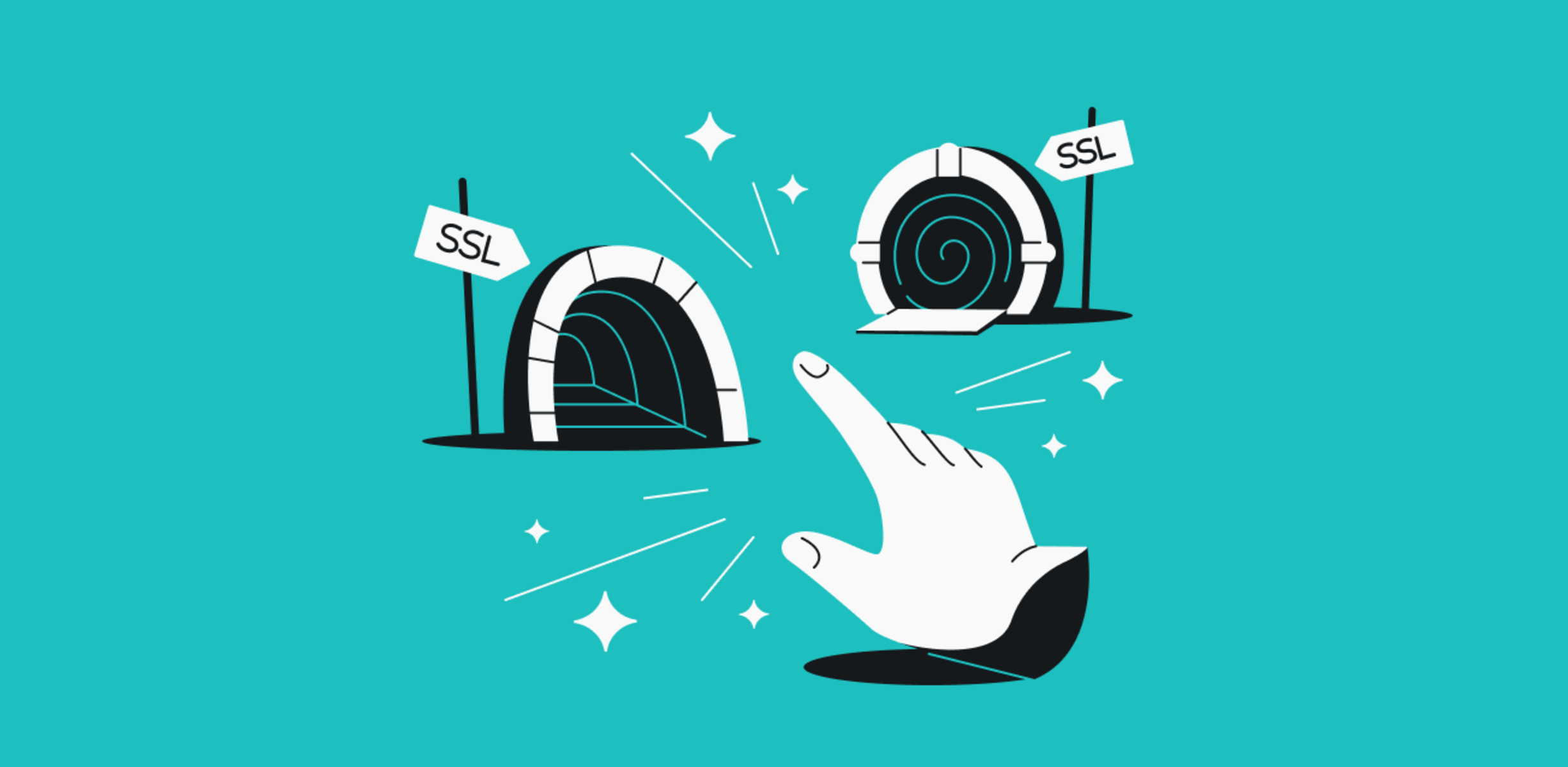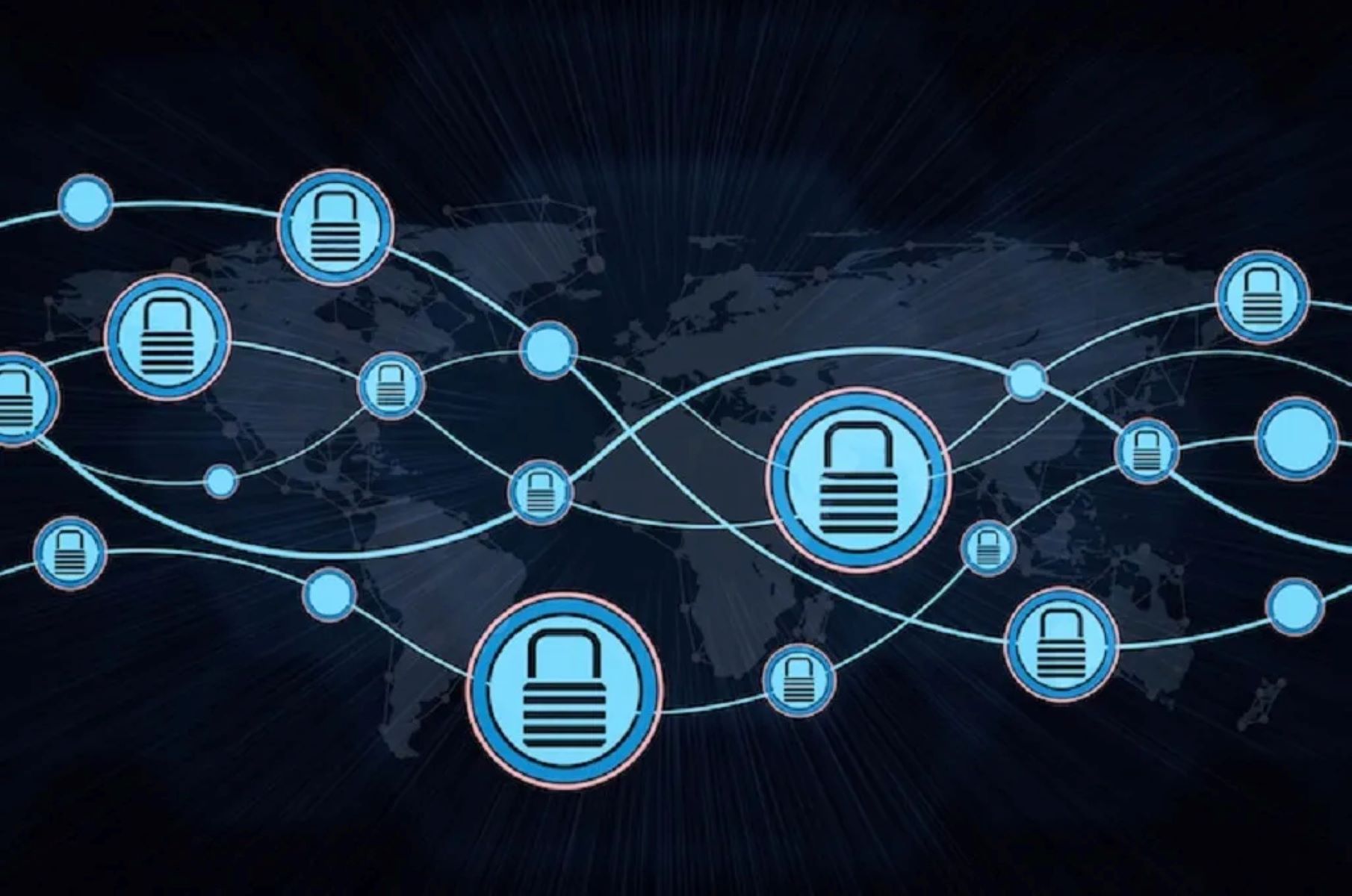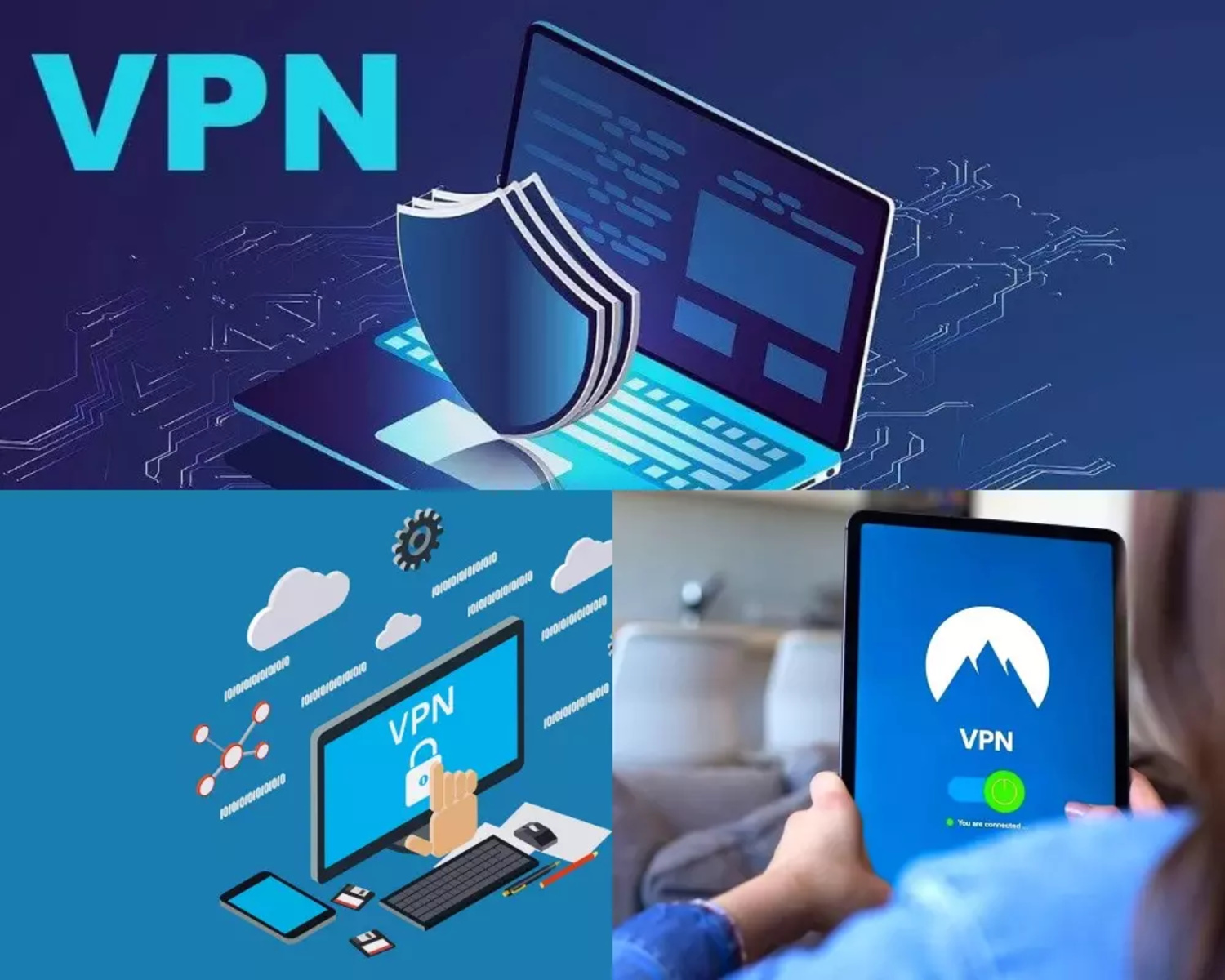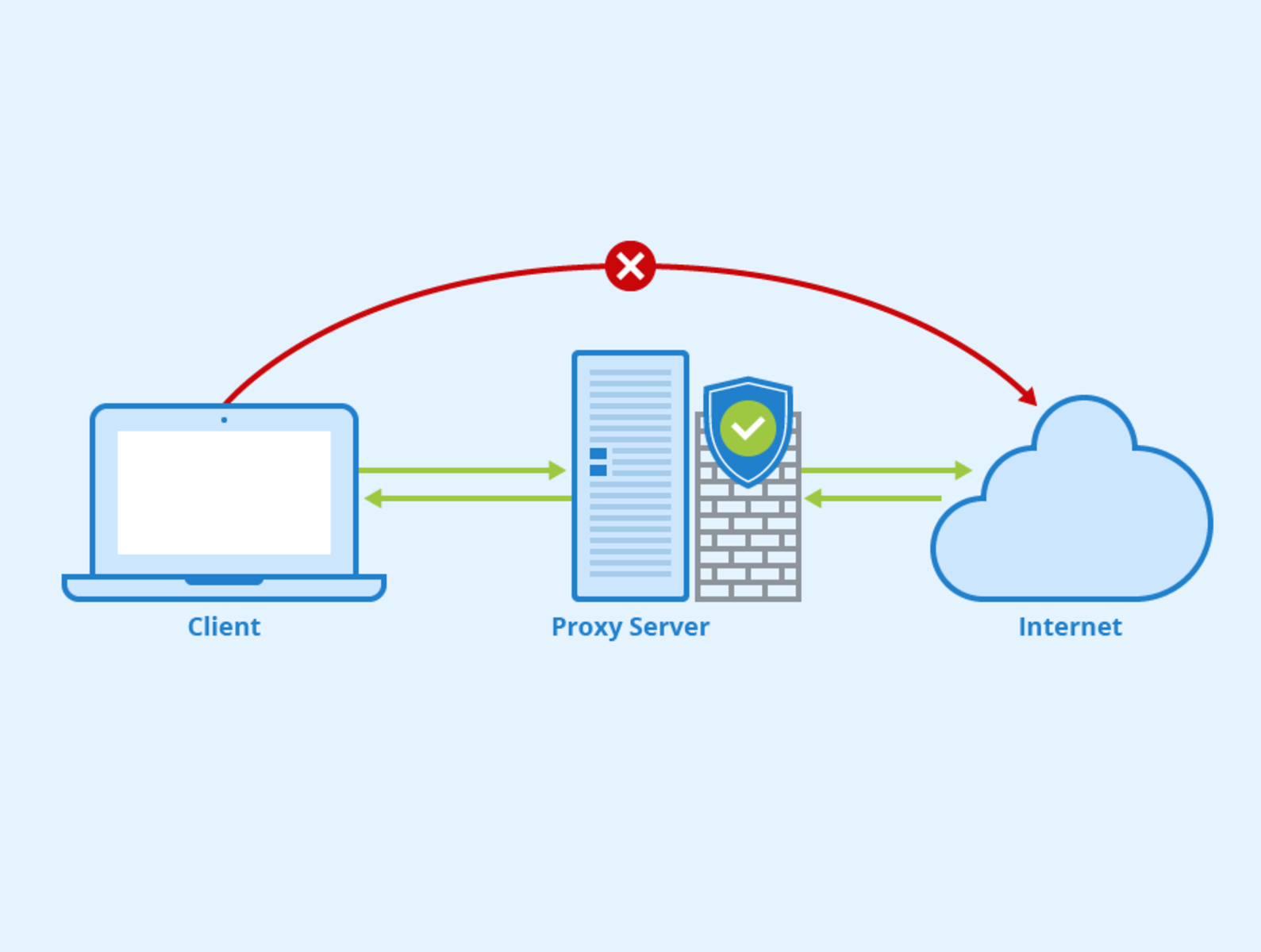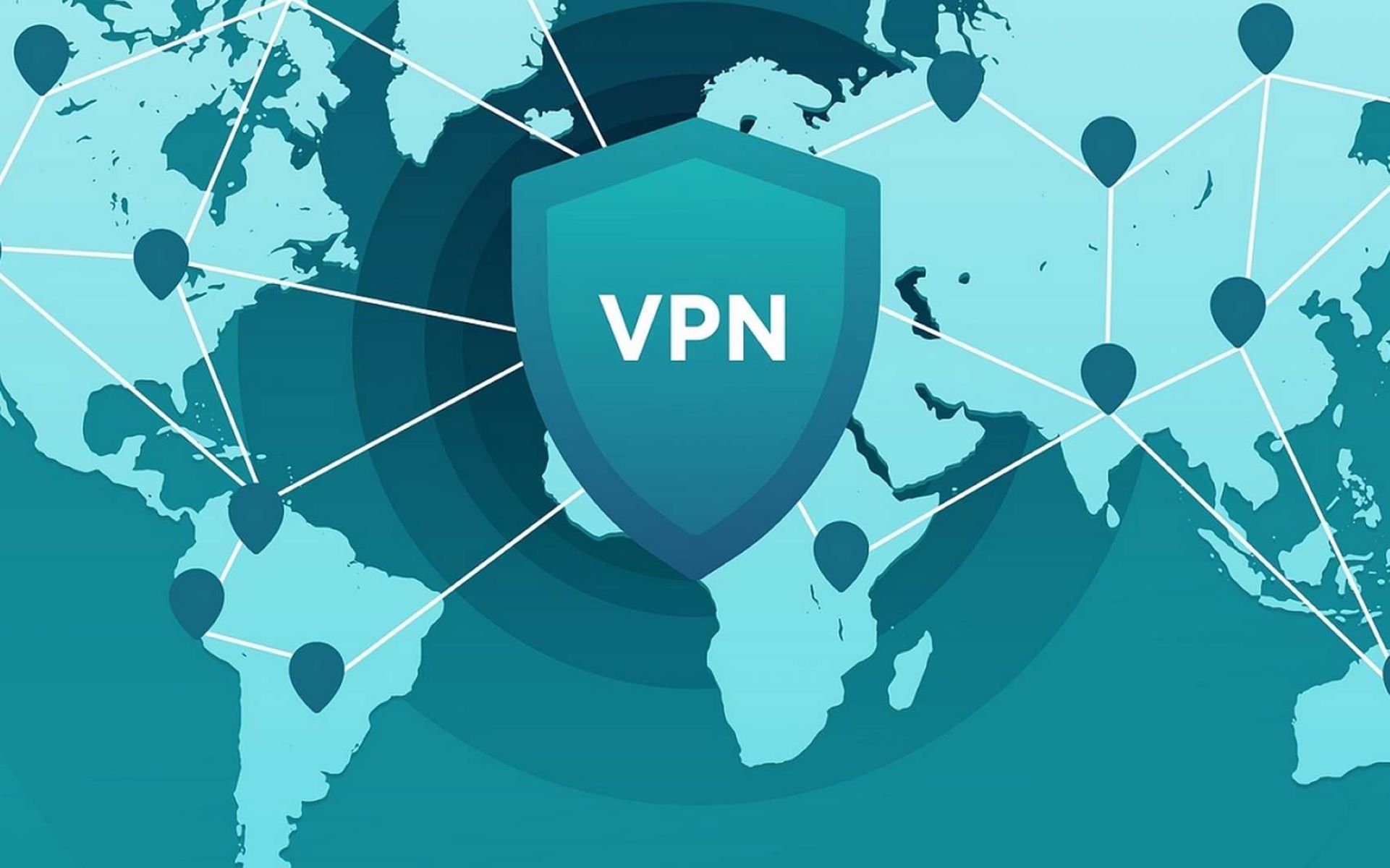What Is SSL VPN?
SSL VPN, which stands for Secure Sockets Layer Virtual Private Network, is a type of virtual private network (VPN) that uses the SSL/TLS protocol to provide secure and encrypted remote access to networks and resources. It allows users to establish a secure connection to a corporate network or other private network over the internet, ensuring that their data and communications are protected from unauthorized access.
Unlike traditional VPNs that require dedicated client software, SSL VPNs utilize standard web browsers, making them more accessible and easier to use. By leveraging the SSL/TLS encryption protocol, SSL VPNs establish a secure communication channel between the user’s device and the target network, encrypting data in transit and protecting it from potential eavesdropping or intercepting attacks.
SSL VPNs work by encapsulating network protocols within a secure HTTPS connection, using the same encryption technology that ensures secure online transactions on e-commerce websites. When a user initiates an SSL VPN connection, their web browser establishes a secure SSL/TLS handshake with the VPN gateway, verifying the identity of both parties and creating a secure connection.
Once connected, SSL VPN users can access resources on the target network through a web-based portal or a virtual desktop interface, seamlessly accessing files, applications, and other network resources as if they were physically present on the network.
SSL VPNs are commonly used by organizations to provide secure remote access to employees, enabling them to work remotely while maintaining a high level of security. They are also utilized for secure access to cloud-based applications, partner networks, or to provide secure access to internal resources for third-party vendors or contractors.
Overall, SSL VPNs offer a flexible and secure solution for remote access, ensuring confidentiality, integrity, and privacy of data and communications. They provide a convenient and user-friendly approach to accessing private networks from any location, without compromising the security of sensitive information.
How Does SSL VPN Work?
SSL VPNs work by utilizing the SSL/TLS protocol to establish a secure and encrypted connection between the user’s device and the target network. The process involves several key steps:
1. Authentication: When a user initiates an SSL VPN connection, the SSL VPN gateway verifies their identity through various authentication methods, such as username and password, two-factor authentication, or digital certificates. This ensures that only authorized users can access the network.
2. Secure Handshake: Once the user’s identity is confirmed, the SSL VPN gateway and the client device perform a secure handshake using the SSL/TLS protocol. During this process, they mutually authenticate each other’s identities, ensuring the integrity and security of the connection.
3. Encryption: After the secure handshake is established, the SSL VPN encrypts all data transferred between the user’s device and the target network. This encryption protects sensitive information from being intercepted and read by unauthorized entities. The SSL/TLS protocol uses strong encryption algorithms to ensure the confidentiality of data in transit.
4. Tunneling: SSL VPNs create a secure tunnel through which data is transmitted between the user’s device and the target network. This tunnel encapsulates network protocols within the SSL/TLS connection, allowing users to access network resources as if they were directly connected to the target network. This ensures that data and communications remain secure even when transmitted over untrusted networks, such as the internet.
5. Access Control: SSL VPNs provide granular access control mechanisms, allowing administrators to define which resources users can access once connected to the VPN. This ensures that users can only reach the resources they are authorized to access, based on their roles, permissions, and other security policies.
Overall, SSL VPNs provide a secure and seamless way for users to access private networks remotely. By leveraging the SSL/TLS encryption protocol, SSL VPNs ensure that data and communications are protected from unauthorized access, allowing organizations to maintain a high level of security while enabling flexible remote access.
Benefits of Using SSL VPN
SSL VPN offers several key advantages that make it a popular choice for secure remote access. Here are some of the benefits of using SSL VPN:
1. Enhanced Security: SSL VPNs utilize the SSL/TLS encryption protocol, which provides strong encryption algorithms to protect data in transit. This ensures that sensitive information remains confidential and protected from unauthorized access, safeguarding against potential cyber threats.
2. Ease of Use: Unlike traditional VPNs, SSL VPNs can be accessed through standard web browsers, eliminating the need for installing dedicated client software on users’ devices. This makes SSL VPNs more user-friendly and accessible, allowing users to establish secure connections with ease.
3. Flexibility and Mobility: SSL VPNs enable users to securely access network resources from any location with an internet connection. This flexibility allows employees to work remotely, increasing productivity and enabling seamless collaboration, even from outside the company’s premises.
4. Scalability: SSL VPNs are highly scalable, making them suitable for organizations of all sizes. Whether a small business or a large corporation, SSL VPNs can handle the increased number of remote connections without compromising security or performance.
5. Cost-Effective: SSL VPNs are often more cost-effective compared to traditional VPN solutions. They eliminate the need for costly hardware or software installations and reduce maintenance overhead. Additionally, SSL VPNs can leverage existing infrastructure, such as web servers and firewalls, saving on additional investments.
6. Granular Access Control: SSL VPNs provide administrators with the ability to define specific access levels and restrictions for users. This ensures that only authorized individuals can access sensitive resources, enhancing overall network security.
7. Compatibility: SSL VPNs are compatible with various platforms and devices, including Windows, Mac, Linux, and mobile devices. This compatibility allows users to connect securely from different operating systems and devices, without any compatibility issues.
8. Remote Management: SSL VPNs often include remote management capabilities, allowing IT administrators to remotely configure and monitor VPN connections. This simplifies network management, ensures compliance with security policies, and facilitates troubleshooting.
In summary, SSL VPNs offer a secure, user-friendly, and cost-effective solution for remote access to networks and resources. With their enhanced security measures, ease of use, and scalability, SSL VPNs are becoming increasingly popular for organizations looking to provide secure remote access to their employees and partners.
SSL VPN vs. Traditional VPN
Both SSL VPN and traditional VPN serve the purpose of providing secure remote access to networks, but they differ in several key aspects. Here’s a comparison between SSL VPN and traditional VPN:
1. Protocol: SSL VPNs use the SSL/TLS encryption protocol to secure the communication between the user’s device and the target network. Traditional VPNs, on the other hand, can use various protocols such as IPsec, PPTP, or L2TP.
2. Accessibility: SSL VPNs can be accessed through standard web browsers, making them more accessible to users without the need for installing dedicated client software. Traditional VPNs typically require the installation of client software on the user’s device.
3. Firewall Compatibility: SSL VPNs are compatible with most firewalls, as they use the standard HTTPS port (port 443). Traditional VPNs may require firewall configurations to allow specific VPN protocols and ports.
4. Granular Access Control: SSL VPNs offer more granular access control mechanisms, allowing administrators to define specific access levels and restrictions for users. Traditional VPNs may have limited access control options.
5. Performance: Traditional VPNs can provide faster connection speeds compared to SSL VPNs since they typically use network layer protocols that are optimized for performance. However, advancements in SSL VPN technology have greatly improved performance in recent years.
6. Scalability: SSL VPNs are highly scalable and can handle a large number of simultaneous connections without compromising performance. Traditional VPNs may have limitations on the number of concurrent connections they can support.
7. Security: Both SSL VPNs and traditional VPNs provide secure communication. However, SSL VPNs offer stronger encryption through the SSL/TLS protocol, making them more resistant to attacks. Traditional VPNs may have vulnerabilities associated with specific protocols.
8. Compatibility: SSL VPNs are compatible with various platforms and devices, including Windows, Mac, Linux, and mobile devices. Traditional VPNs may have more limited compatibility, requiring specific client software for different operating systems.
9. Cost: SSL VPNs are often more cost-effective compared to traditional VPN solutions, as they eliminate the need for dedicated client software and can leverage existing infrastructure. Traditional VPNs may require additional hardware and software investments.
Overall, SSL VPNs are gaining popularity due to their ease of use, enhanced security, and flexibility. They are particularly advantageous for organizations that require widespread access by users across multiple devices and platforms. Traditional VPNs, on the other hand, may still be a preferred choice in certain scenarios where performance and specific protocol compatibility are critical factors.
Different Types of SSL VPN
SSL VPNs come in different types, each offering unique features and functionalities. Here are some of the commonly used types:
1. Clientless SSL VPN: Clientless SSL VPN, also known as web-based SSL VPN, allows users to access resources on the target network through a web browser without the need for installing client software. It provides remote access to web applications, file shares, and other network resources through a secure web portal. This type of SSL VPN is convenient for users as they can connect from any device with a web browser, making it suitable for scenarios where the user environment is not controlled.
2. Thin Client SSL VPN: Thin Client SSL VPN requires the installation of a lightweight client software on the user’s device. This client provides a secure connection to the SSL VPN gateway, allowing access to web-based applications, file shares, and other resources. Unlike a full client VPN, the thin client VPN does not grant the user direct access to the entire network. Instead, it provides selective access to specific resources defined by the administrator.
3. Full Tunnel SSL VPN: Full Tunnel SSL VPN routes all network traffic from the user’s device through the SSL VPN gateway. This means that all internet traffic, not just the traffic destined for the target network, is encrypted and sent through the VPN. This type of SSL VPN is useful in scenarios where organizations want to ensure that all traffic is secured and protected, even when users access the internet through public or untrusted networks.
4. Split Tunnel SSL VPN: Split Tunnel SSL VPN allows users to decide which traffic is sent through the VPN and which traffic is directly routed to the internet. This type of SSL VPN can be beneficial in terms of performance and bandwidth optimization, as not all traffic needs to go through the VPN. Users can access resources on the target network securely while still maintaining direct access to the internet for non-sensitive activities.
5. Virtual Desktop Infrastructure (VDI) SSL VPN: VDI SSL VPN provides remote access to virtual desktops hosted on servers within the target network. This allows users to access their complete desktop environment, including applications and files, from any device with an internet connection. VDI SSL VPN offers a secure and efficient way to provide remote access to employees, contractors, or third-party vendors, allowing them to work within a controlled and secure virtual environment.
6. Mobile SSL VPN: Mobile SSL VPN caters specifically to mobile devices such as smartphones and tablets. This type of SSL VPN ensures secure access to corporate resources from mobile devices, enabling employees to work remotely while on the go. Mobile SSL VPNs often provide additional features like mobile device management (MDM) to enforce security policies and protect sensitive data on mobile devices.
These different types of SSL VPNs offer various options for organizations to implement secure remote access solutions that align with their specific requirements. The choice of the SSL VPN type depends on factors such as the nature of resources to be accessed, user environment, security needs, and network infrastructure.
Security Features of SSL VPN
SSL VPNs are designed with robust security features to ensure the confidentiality, integrity, and authentication of data and communications. Here are some of the key security features of SSL VPN:
1. Encryption: SSL VPNs use strong encryption algorithms, such as AES (Advanced Encryption Standard), to encrypt data in transit between the user’s device and the target network. This encryption prevents unauthorized entities from intercepting and accessing sensitive information exchanged during the VPN session.
2. Authentication: SSL VPNs enforce authentication mechanisms to verify the identity of users before granting them access to the target network. This can involve a combination of methods, such as username and password, two-factor authentication (2FA), or digital certificates. Strong authentication helps prevent unauthorized access and ensures that only legitimate users can establish a VPN connection.
3. Access Control: SSL VPNs offer granular access control capabilities, allowing administrators to define specific access rules and restrictions for users. This ensures that users can only access the resources they are authorized to access, based on their roles, permissions, and security policies. Access control helps prevent unauthorized access to sensitive information and protects the integrity of the network.
4. Endpoint Security: SSL VPNs often include endpoint security measures to ensure that the user’s device meets certain security requirements before allowing access to the VPN. This can involve checking for up-to-date antivirus software, firewall settings, and other security configurations. By enforcing endpoint security, SSL VPNs help protect the network from potential security risks posed by compromised or vulnerable devices.
5. Secure Tunneling: SSL VPNs create a secure tunnel between the user’s device and the target network, encapsulating network protocols within the SSL/TLS connection. This tunneling ensures that data is encrypted and protected from interception or tampering while traversing untrusted networks, such as the internet. Secure tunneling safeguards the confidentiality and integrity of data during transit.
6. Intrusion Prevention: Some SSL VPN solutions include intrusion prevention systems (IPS) that scan network traffic for known threats and malicious activities. IPS can detect and block intrusion attempts, malware, and other forms of cyber threats, further enhancing the security of the VPN network.
7. Single Sign-On (SSO): SSL VPNs can integrate with single sign-on systems, allowing users to authenticate once and gain access to multiple resources without the need for repeatedly entering login credentials. This improves convenience for users while maintaining strong authentication and access control measures.
8. Logging and Auditing: SSL VPNs often provide logging and auditing capabilities, recording details of user activities, login attempts, and other relevant events. These logs can be used for security analysis, troubleshooting, and compliance purposes, helping organizations to identify any suspicious or unauthorized activities.
Overall, the security features of SSL VPNs ensure that sensitive data and communications are protected from unauthorized access or interception. By implementing strong encryption, authentication, access control, and other security measures, SSL VPNs provide a secure remote access solution that meets the stringent security requirements of organizations.
Setting Up SSL VPN
Setting up an SSL VPN involves several steps to ensure a secure and functional remote access solution. Here’s a general guide on how to set up an SSL VPN:
1. Plan and Design: Determine the goals and requirements of your SSL VPN implementation, including the resources to be accessed, the number of users, and the desired level of security. Consider factors such as network topology, authentication methods, access control policies, and scalability needs.
2. Choose SSL VPN Solution: Select an SSL VPN solution that meets your organization’s needs and aligns with your budget and technical requirements. Research available options, compare features, and evaluate compatibility with your network infrastructure and target devices.
3. Configure SSL VPN Gateway: Set up the SSL VPN gateway, which acts as the entry point for remote users. Configure the gateway with the necessary network settings, authentication methods, and access control policies. Ensure that the SSL/TLS certificates are properly obtained and installed on the gateway to establish secure connections.
4. Configure User Authentication: Determine the user authentication method that best fits your security requirements. This can include username-password authentication, two-factor authentication, or digital certificates. Configure the SSL VPN gateway to enforce strong authentication before granting access to the network.
5. Define Access Control Policies: Determine the resources and services that remote users should be able to access. Use access control policies to define granular access rules based on user roles, permissions, and security policies. Specify which applications, files, and network resources are accessible through the SSL VPN.
6. Set Up Endpoint Security Measures: Consider implementing endpoint security measures to ensure that remote devices meet specific security requirements before accessing the SSL VPN. This can include checking for up-to-date antivirus software, firewall settings, and patch levels. Configure the SSL VPN gateway to enforce endpoint security checks.
7. Test and Deploy: Before deploying the SSL VPN solution to users, thoroughly test its functionality and security. Verify that remote access is working correctly, and all security measures are properly implemented. Conduct pilot testing with a small group of users before fully deploying the SSL VPN to the entire organization.
8. Provide User Training and Support: Educate and provide necessary training to users on how to set up and use the SSL VPN. Ensure that users understand the security measures in place, such as strong authentication requirements and the importance of keeping their access credentials secure. Establish a support system to assist users with any issues they may encounter.
9. Regularly Update and Maintain: Keep the SSL VPN solution up to date by applying security patches and updates. Monitor logs and implement regular security audits to identify and address potential vulnerabilities. Regularly review and update access control policies to accommodate changes in user roles or network resources.
By following these steps, organizations can successfully set up and deploy an SSL VPN solution that provides secure and convenient remote access to their network and resources.
Common SSL VPN Use Cases
SSL VPNs are versatile and can be applied to various use cases, providing secure remote access to networks and resources. Here are some of the common use cases of SSL VPN:
1. Remote Employee Access: One of the primary use cases of SSL VPN is to provide secure remote access to employees who need to work remotely. SSL VPN allows employees to securely connect to the company’s network and access internal resources from any location with an internet connection. This enables employees to be productive outside the office while maintaining the security of corporate data.
2. Partner and Vendor Access: SSL VPNs can be used to grant secure access to partners, vendors, or contractors who require access to specific resources or services. By setting up an SSL VPN, organizations can extend their network access to trusted third parties, ensuring that the access is secure, monitored, and limited to the resources they need to carry out their tasks.
3. Secure File Sharing: SSL VPNs can also be used for secure file sharing. By providing users with remote access to file shares, organizations can enable secure collaboration and sharing of files between remote employees, partners, or clients. SSL VPN ensures that the file transfer is encrypted and protected from unauthorized access.
4. Remote Desktop Access: SSL VPNs can facilitate remote access to virtual desktop environments, enabling users to access their complete desktop environment and applications securely. This use case is particularly helpful for organizations that utilize virtual desktop infrastructure (VDI) to provide a consistent and controlled computing experience for remote employees.
5. Secure Access to Cloud Applications: SSL VPNs can enable secure access to cloud-based applications and services that are hosted outside the corporate network. By allowing remote users to securely connect to the organization’s cloud environment, SSL VPNs ensure that data is encrypted and protected during transmission, maintaining the security and integrity of cloud-based operations.
6. Mobile Device Access: As the workforce becomes increasingly mobile, SSL VPNs play a vital role in providing secure access to corporate resources from mobile devices. With mobile SSL VPN, employees can securely access email, files, and other resources on their smartphones or tablets, ensuring that sensitive data remains protected even when accessed on the go.
7. Compliance with Regulations: SSL VPNs can be utilized to meet compliance requirements and regulations, such as HIPAA (Health Insurance Portability and Accountability Act) or GDPR (General Data Protection Regulation). By implementing SSL VPN, organizations can ensure that remote access to sensitive data is encrypted and audited, helping demonstrate compliance with data security and privacy standards.
8. Replacement for Legacy VPNs: SSL VPNs are often implemented as a modern alternative to traditional VPN solutions. SSL VPNs provide enhanced security, greater flexibility, and easier remote access compared to legacy VPN technologies. Organizations looking to upgrade or replace their outdated VPN infrastructure can benefit from implementing SSL VPNs.
These are just a few of the many use cases of SSL VPNs. The flexibility and security offered by SSL VPNs make them a valuable tool for organizations seeking secure remote access solutions tailored to their specific needs.
Challenges of SSL VPN
While SSL VPNs offer numerous benefits and secure remote access capabilities, they also present some challenges that organizations need to address. Here are some of the common challenges of SSL VPN:
1. Scalability: As the number of users and concurrent connections increases, SSL VPNs may face scalability challenges. Ensuring that the VPN infrastructure can handle a large number of connections without compromising performance can be a complex task. Organizations need to carefully plan and configure their SSL VPN solution to accommodate increasing user demand and maintain optimal performance.
2. Network Connectivity: SSL VPNs rely on internet connectivity to establish a secure connection between the user’s device and the target network. Any disruptions or instability in the internet connection can impact the functionality and availability of the SSL VPN. Organizations must have redundant internet connections or backup options in place to ensure continuous connectivity and minimize downtime.
3. Compatibility: SSL VPNs need to be compatible with a wide range of devices, platforms, and operating systems. However, ensuring compatibility across all devices and keeping up with frequent updates and changes in the device landscape can be a challenge. Organizations need to regularly test and update their SSL VPN solution to ensure compatibility with the latest devices and operating systems.
4. Client Installation and Configuration: While clientless SSL VPNs eliminate the need for dedicated client software, some SSL VPN solutions may still require client software installation on the user’s device. The installation and configuration process can sometimes be complex, especially for users with limited technical expertise. Providing clear instructions and support for users during the installation and configuration process is essential to ensure a smooth user experience.
5. Security Risks: While SSL VPNs provide robust security measures, they can still be vulnerable to security risks if not properly configured and maintained. Weak or outdated encryption algorithms, misconfigured access control, or inadequate endpoint security can expose the SSL VPN to potential threats. Regular security assessments, patch management, and monitoring are crucial to mitigate security risks and ensure the ongoing integrity of the SSL VPN environment.
6. User Education: It is important to educate users on the proper use of SSL VPNs and the risks associated with remote access. Users need to understand the importance of keeping their access credentials secure, following security policies, and being cautious about accessing resources from unfamiliar or untrusted networks. Organizations should provide user training and ongoing awareness programs to promote safe remote access practices.
7. Performance Impact: The encryption and tunneling processes involved in SSL VPNs can introduce some performance overhead. While modern SSL VPN solutions have improved performance, organizations need to consider the potential impact on network bandwidth and latency, especially during peak usage times. Proper network planning, bandwidth allocation, and optimization techniques can help mitigate performance issues.
By addressing these challenges and implementing best practices, organizations can overcome the obstacles associated with SSL VPNs and ensure a secure and efficient remote access solution for their users.
Conclusion
SSL VPNs provide a secure and convenient solution for remote access to private networks and resources. By leveraging the SSL/TLS encryption protocol, SSL VPNs ensure that data and communications remain protected from unauthorized access and interception. The use of SSL VPNs offers several benefits, including enhanced security, ease of use, flexibility, and scalability.
Setting up an SSL VPN involves careful planning, selecting the right solution, configuring the SSL VPN gateway, and defining access control policies. Organizations should also consider user authentication methods, endpoint security measures, and regularly update and maintain the SSL VPN infrastructure. By following these steps, organizations can establish a robust SSL VPN solution that meets their security requirements and provides seamless remote access for employees, partners, and vendors.
However, it is important to be aware of the challenges associated with SSL VPNs. These challenges include scalability, network connectivity, compatibility, client installation and configuration, security risks, user education, and performance impact. By proactively addressing these challenges and implementing best practices, organizations can mitigate risks and ensure the smooth operation of their SSL VPN environment.
Overall, SSL VPNs offer a secure and flexible solution for remote access, enabling organizations to embrace remote work, enhance productivity, and improve collaboration while maintaining the security of their networks and data. With the continuous advancement of technology, SSL VPNs will continue to evolve and play an important role in enabling secure remote access in the modern digital landscape.







